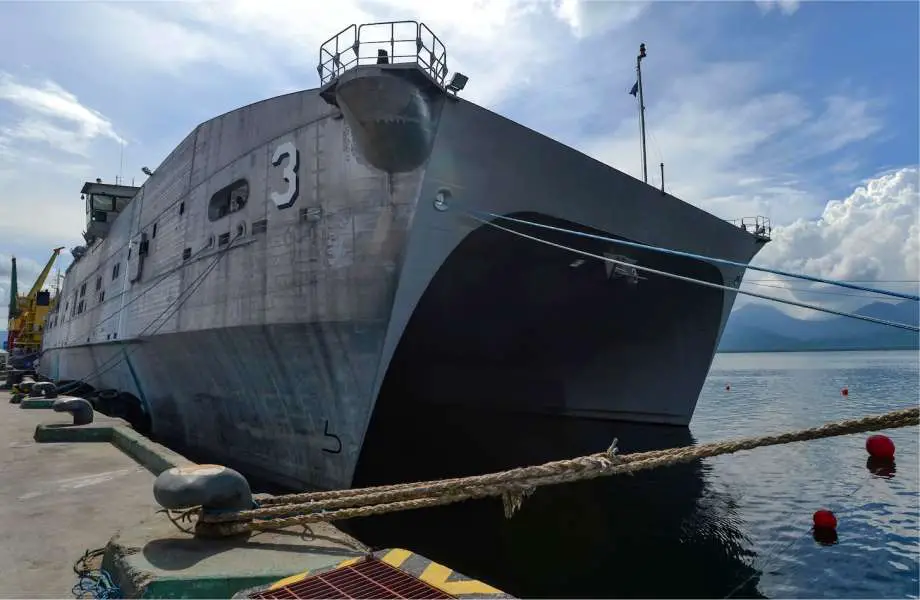Breaking news
Philippines & US Navy start maritime training Exercise Sama Sama.
According to information published by the US DoD on October 2, 2023, marking the seventh edition of the annual maritime training, Exercise Sama Sama commenced in Manila with the collaboration of the U.S. Navy, U.S. Marine Corps, Armed Forces of the Philippines, and several international allies.
Follow Navy Recognition on Google News at this link
 Spearhead class expeditionary fast transport USNS Millinocket at the occasion of Sama Sama 2019. (Picture source: US Navy)
Spearhead class expeditionary fast transport USNS Millinocket at the occasion of Sama Sama 2019. (Picture source: US Navy)
This year’s Maritime Training Activity (MTA) Sama Sama will encompass both shore and sea phases. The agenda is set to cover a spectrum of areas including medicine, legal concepts, engineering, logistics, and public affairs.
Specialized diving and explosive ordnance disposal teams, accompanied by naval vessels and surveillance aircraft, will execute drills targeting anti-submarine, surface, and air warfare, while enhancing maritime domain awareness.
Sama Sama 2023 has witnessed an evolution in its complexity, making this year the most extensive iteration with the inclusion of participants from Australia, Canada, France, Japan, Malaysia, the Philippines, the United Kingdom, and the United States.
Key participating assets this year are the U.S. Navy’s USNS Wally Schirra, USS Dewey, and the P-8 Poseidon surveillance aircraft. They join the Philippine Navy’s BRP Antonio Luna, Japan’s JS Akebono, and Canada’s HMCS Vancouver.
Technical overview of key participating assets in the exercise
The USNS Wally Schirra (T-AKE 8) is a dry cargo ammunition ship, primarily designed to support carrier strike groups by providing fuel, dry and refrigerated stores, and ammunition.
With a displacement of approximately 42,000 metric tons, it has a speed of 20 knots and relies on an integrated propulsion system capable of producing 26 MW of power.
The USS Dewey (DDG 105) is an Arleigh Burke-class guided missile destroyer. This multi-mission vessel specializes in anti-aircraft, anti-submarine, and anti-surface warfare and is also equipped for ballistic missile defense roles.
She displaces around 9,200 tons, has a length of approximately 155 meters, and can exceed speeds of 30 knots. Its armament includes a combination of missiles, guns, and torpedoes, backed by the Aegis Combat System.
Completing the U.S. contingent is the P-8 Poseidon Surveillance Aircraft, a military adaptation of Boeing's 737-800. This aircraft is purposed for anti-submarine warfare, anti-surface warfare, and shipping interdiction, while also being adept at early warning self-protection.
With a maximum takeoff weight of approximately 85,820 kg, she offers a range of around 1,200 nautical miles with 4 hours on station. The P-8 Poseidon can be armed with torpedoes, depth charges, SLAM-ER missiles, Harpoon anti-ship missiles, among other munitions.
Representing the Philippine Navy is the BRP Antonio Luna (FF 151), a frigate designed for multi-mission naval operations, whether they be air, surface, or sub-surface.
This vessel displaces an estimated 3,000 tons, stretches approximately 107 meters, and is armed with a variety of guns, missiles, and torpedoes tailored for a myriad of naval missions.
From Japan, the JS Akebono (DD 108), a destroyer, has been included. Catering to multi-purpose operations, this vessel can conduct anti-aircraft, anti-surface, and anti-submarine warfare. She has a displacement of around 5,000 tons, is approximately 150 meters in length, and is equipped with a mix of missiles, torpedoes, and naval guns.
Canada has contributed the HMCS Vancouver (FFG -331), a Halifax-class frigate. Designed for anti-submarine warfare and area air defense, she displaces roughly 4,770 tons, measures about 134 meters, and possesses an armament suite comprising missiles, naval guns, and torpedoes suitable for a spectrum of naval combat scenarios.























